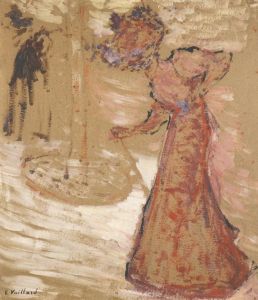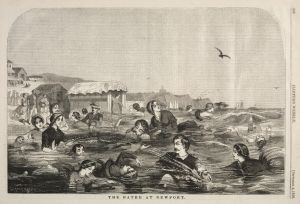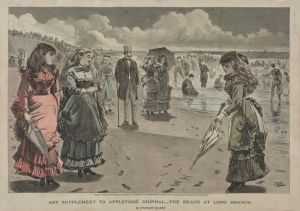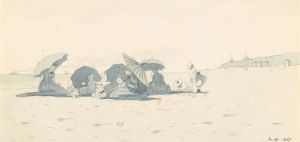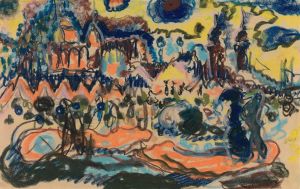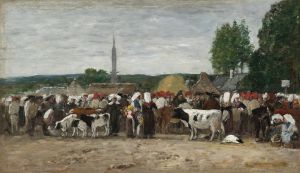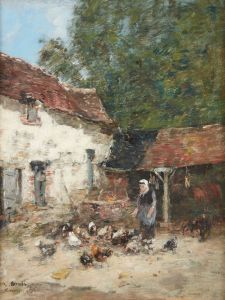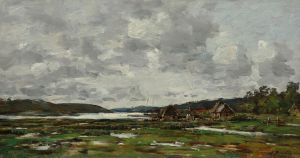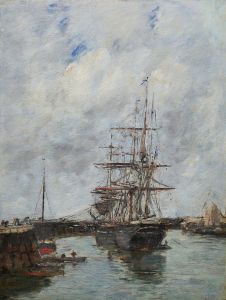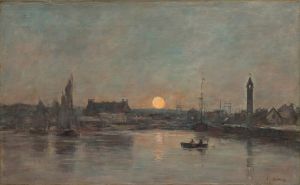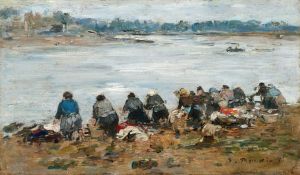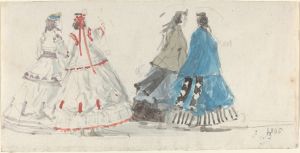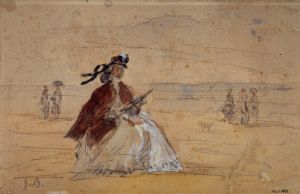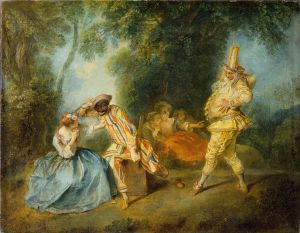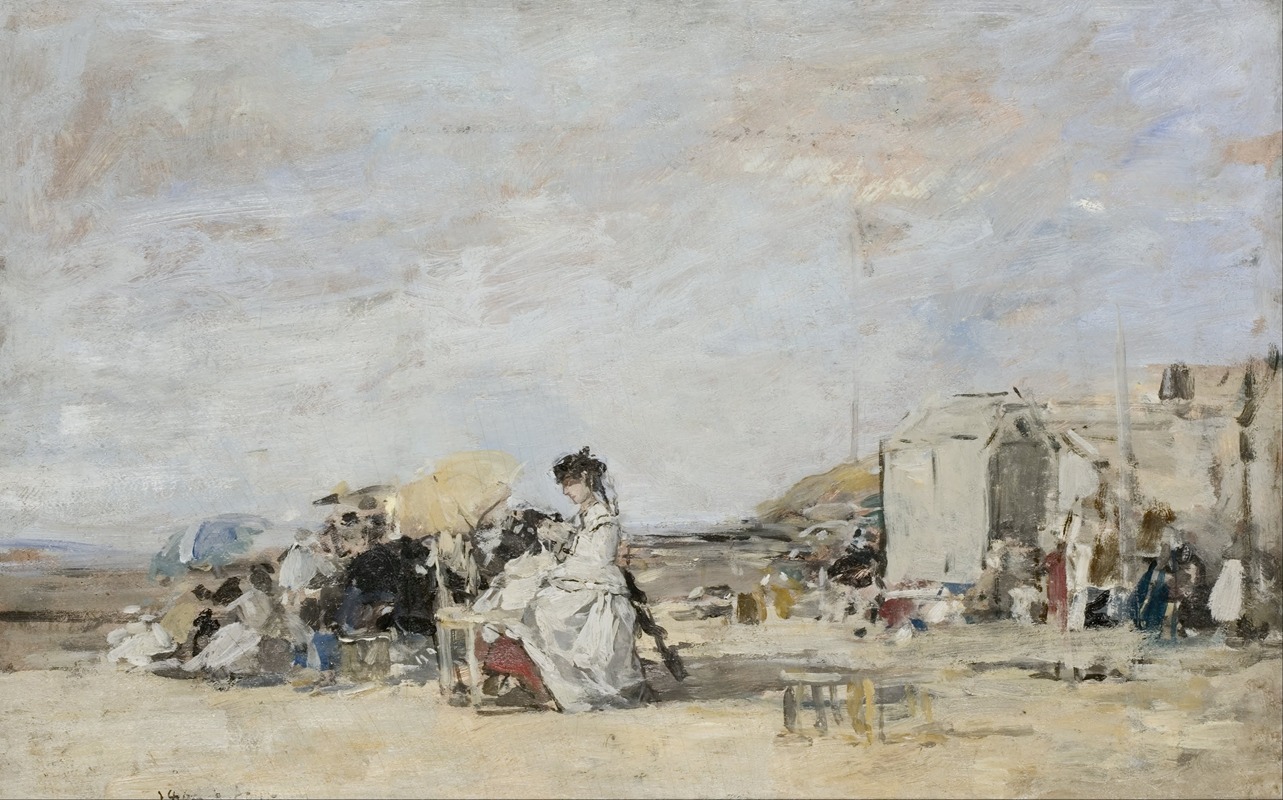
Lady in White on the Beach at Trouville
A hand-painted replica of Eugène Boudin’s masterpiece Lady in White on the Beach at Trouville, meticulously crafted by professional artists to capture the true essence of the original. Each piece is created with museum-quality canvas and rare mineral pigments, carefully painted by experienced artists with delicate brushstrokes and rich, layered colors to perfectly recreate the texture of the original artwork. Unlike machine-printed reproductions, this hand-painted version brings the painting to life, infused with the artist’s emotions and skill in every stroke. Whether for personal collection or home decoration, it instantly elevates the artistic atmosphere of any space.
Eugène Boudin's painting Lady in White on the Beach at Trouville is a notable example of the artist's dedication to capturing the leisure activities and coastal landscapes of 19th-century France. Boudin, a French painter born in 1824, is widely regarded as one of the precursors of Impressionism. He is particularly celebrated for his plein air (outdoor) painting technique and his ability to depict the interplay of light, atmosphere, and human presence in natural settings.
This artwork portrays a woman dressed in white, seated on the beach at Trouville, a popular seaside resort in Normandy. Trouville was a frequent subject in Boudin's work, as it became a fashionable destination for the French bourgeoisie during the mid-19th century. The painting exemplifies Boudin's skill in rendering the textures and luminosity of the seaside environment, with particular attention to the effects of light on the figure's clothing and the surrounding landscape.
Boudin's focus on everyday life and his ability to capture fleeting moments of leisure reflect the broader cultural and artistic shifts of his time. The rise of seaside tourism in France during the 19th century was closely linked to the development of railways, which made coastal destinations more accessible to urban populations. Artists like Boudin were drawn to these locations, finding inspiration in the relaxed atmosphere and the changing social dynamics of the era.
The painting is characterized by its loose brushwork and subtle color palette, hallmarks of Boudin's style. His approach to depicting the sky and water, often with a sense of movement and changing weather conditions, demonstrates his deep observation of nature. The figure of the woman in white serves as a focal point, contrasting with the expansive beach and sky, and adding a human element to the serene coastal scene.
While specific details about the creation date or current location of Lady in White on the Beach at Trouville are not provided here, it is consistent with Boudin's broader body of work, which often featured similar themes and settings. His paintings of Trouville and other coastal towns influenced later Impressionist artists, including Claude Monet, who admired Boudin's ability to capture the ephemeral qualities of light and atmosphere.
Eugène Boudin's contributions to art history lie in his pioneering approach to plein air painting and his role in bridging the gap between the Barbizon School and the Impressionist movement. Lady in White on the Beach at Trouville is a testament to his enduring legacy as a painter of light, leisure, and the natural world.





